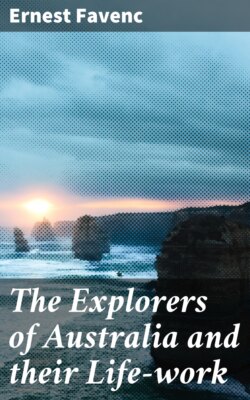Читать книгу The Explorers of Australia and their Life-work - Ernest Favenc - Страница 15
На сайте Литреса книга снята с продажи.
2.3. THE UNKNOWN WEST.
ОглавлениеThe settlers of that day took every advantage of the new outlets for their energies, thrown open to them by the recent successful explorations. Cattle and sheep were rapidly driven forward on to the highlands, and, favoured by a beautiful site, the town of Bathurst soon assumed an orderly appearance. Private enterprise had also been at work elsewhere. The pioneer settlers were making their way south; the tide of settlement flowed over the intermediate lands to the Shoalhaven River; and in the north they had commenced the irresistible march of civilization up the Hunter River.
It was in the Shoalhaven district that young Hamilton Hume, the first Australian-born explorer to make his mark in the field, gained his bushcraft.
Governor Macquarie, during his term of office, did his best to foster exploration; and it was fortunate that the first advance into the interior occurred when there was a Governor in Australia who did not look coldly upon geographical enterprise.
The men who entered first upon the task of solving the geographical problems of the interior of the Australian continent were doomed to meet with much bitter disappointment. The varying nature of the seasons caused the different travellers to form contrary and perplexing ideas, often with regard to the same tract of country. What appeared to one man a land of pleasant gurgling brooks, flowing through rich pastures, appeared to another as a pitiless desert, unfit for human foot to venture upon. Oxley, who traversed what is now the cream of the agricultural portion of the state of New South Wales, speaks of the main part of it in terms of the bitterest condemnation. His error was of course rather a mistake in judgment than the result of inaccurate observation.
Some of the colonists nursed far fonder hopes, and the general opinion seemed to be that these western flowing rivers would gather in tributaries, and having swollen to a size worthy of so great a continent, seek the sea on the west coast. W.C. Wentworth, who certainly was capable of forming an opinion deserving consideration, wrote thus of the then untraced Macquarie River:--
"If the sanguine hopes to which the discovery of this river (the Macquarie) has given birth should be realised, and it should be found to empty itself into the ocean in the north-west coast, which is the only part of this vast island that has not been accurately surveyed, in what mighty conceptions of the future power and greatness of this colony may we not reasonably indulge? The nearest point at which Mr. Oxley left off to any part of the western coast is very little short of two thousand miles. If this river therefore be already of the size of the Hawkesbury at Windsor, which is not less than two hundred and fifty yards in breadth, and of sufficient depth to float a seventy-four gun ship, it is not difficult to imagine what must be its magnitude at its confluence with the ocean, before it can arrive at which it has to traverse a country nearly two thousand miles in extent. If it possesses the usual sinuosities of rivers, its course to the sea cannot be less than from five to six thousand miles, and the endless accession of tributary streams which it must receive in its passage through so great an extent of country will, without doubt, enable it to vie in point of magnitude with any river in the world."
It was to realise such ambitious hopes as these that Oxley went forth to penetrate into the interior.
